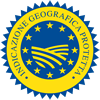Description
The Pera Mantovana PGI refers to the fresh pear deriving from the following varieties: Abate Fetel, Conference, Decana del Comizio, Kaiser, Max Red Bartlett, William, Carmen, and Santa Maria.
Production Area
The production area of Pera Mantovana PGI is within the numerous municipalities in the Province of Mantua, in the Lombardy region.
Production Method
The plantation systems are those which are traditionally used in the production area, with the possibility of planting 6000 plants per hectare for new plantations. The trees must be pruned at least once in winter. Where possible, integrated or organic pest control is preferred. Harvesting is generally carried out by hand during the period between August and May, depending on the variety. Total production per unit is 55 tonnes per hectare for all the varieties. The fruit are stored in refrigerators, while the William, Max Red Bartlett, Abbot Fetel, Conference, Decana del Comizio, and Kaiser pears destined to be put on the market in spring, must be stored in a controlled atmosphere.
Appearance and Flavour
Pera Mantovana PGI has a different characteristics depending on the variety: the Abate Fetel is apple-shaped, fairly elongated and pale greenish-yellow, with russetting on either end and a sweet flavour; the Conference variety is pear-shaped, often symmetrical, with a green-yellowish skin with dispersed rusty patches around the bottom and a sweet flavour; the Decana del Comizio is turbinated and has smooth, pale greenish-yellow or pinkish skin, with dispersed russetting; the Kaiser is apple-pear shaped. with wrinkly, russetted skin and succulent pulp; the Max Red Bartlett and William varieties are barrel or pear-shaped, with a smooth pinkish or bright red skin on a greenish-yellow background, sometimes streaky, and a sweet aromatic flavour; the Santa Maria variety is pear or truncated pear-shaped, with a smooth yellowish-green skin and crunchy white pulp; the Carmen is barrel-shaped, slightly elongated, with green skin with pinkish streaks and white, very juicy pulp.
History
Pera Mantovana PGI has ancient origins dating back to at least the 15th century. Its primacy as the most important crop in the production area was already noted in 1475, as evidenced by historical references to the presence of different pear varieties in the orchard of a large farm in San Giacomo delle Segnate. It was only in the mid-20th century that production arrived at a commercial level, as up until the end of the Second World War it was used almost exclusively for local consumption.
Gastronomy
Pera Mantovana PGI is fully ripened when the pulp is soft to the touch at the base of the petiole. If bought before it is ripe, the pear should be put in a paper bag for 2-3 days until it has fully ripened. It will keep longer if kept in the least cold compartment of the refrigerator. It can be eaten either fresh or cooked, and is ideal for making syrups and cakes. Pear mustard is a typical product in Virgiliana cuisine and is an essential basic ingredient for making traditional Mantuan pumpkin tortelli. It also pairs perfectly with honey and mature cheeses.
Marketing
The product is marketed as Pera Mantovana PGI, in the following varieties: Abate Fetel, Conference, Decana del Comizio, Kaiser, Max Red Bartlett, William, Carmen and Santa Maria. It must be put on the market between July 15th and June 30th of the year following the harvest. It is sold in packaging on which it is possible to affix the specific mark with the name followed by the wording Protected Geographical Indication (PGI).
Distinctive Features
Pera Mantovana PGI has many beneficial proprieties for the organism. It is diuretic, purifying and contains few calories. Furthermore, diabetics can eat it without any problems, as the sugar content consists mostly of fructose.























